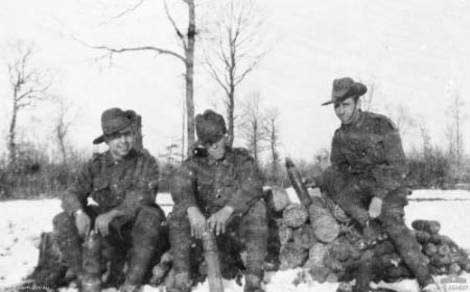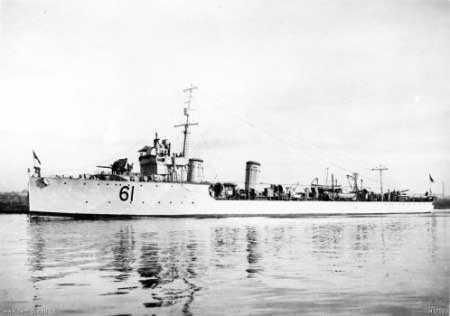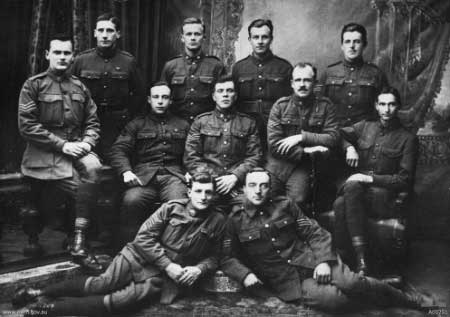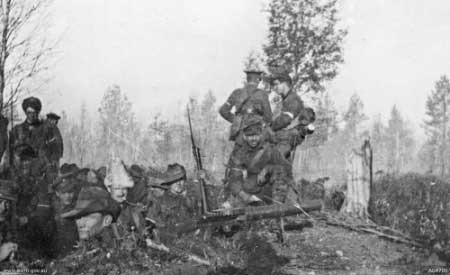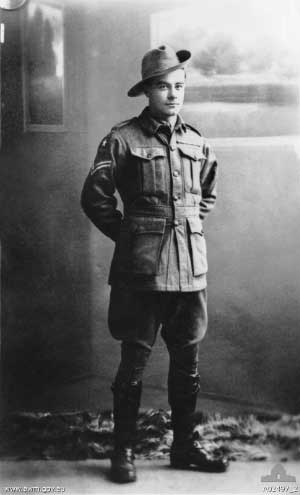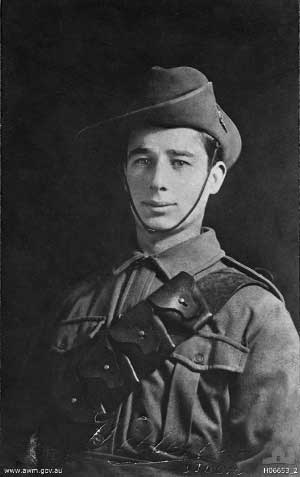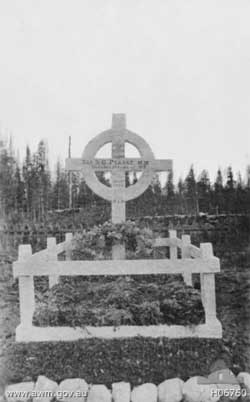|
Australian Soldiers Fight As Volunteers With The British Army at Archangel, Northern Russia in 1919
After WW1 ended in 1918, members of the Australian Imperial Force still in the United Kingdom resigned from the AIF to join the British Army as Volunteers to fight at Archangel in Northern Russia with British forces in 1919. This little known fact of Ausralians fighting in Russia is I believe, largely due to the fact that they did not fight as an Australian Unit, but as part of a British force, there is no official history about them from an Australian viewpoint, and so few in total were involved. They appear to have retained their Australian uniforms.
The original Allied force was pathetically small. The Allies intervened in Russia between 1917-1920, initially it was a reaction caused by the withdrawal of Russia from the Great War after the Bolskeviks seized power in 1917. When the Russians stopped fighting in the war it allowed Germany to move a large body of troops to the Western Front, also, under the Treaty of Brest- Litovsk, it gave Germany the right to occupy a large area of European Russia. Here were large stocks of military equipment, a good deal of it supplied by the Allies.
Some Australians served advisers with the British Militay mission to Admiral Av Kolchak in Siberia, but the bulk of Australians serving in Northern Russia over 1918-1919 were advisers to a part of the relieving force to extricate the original party.
First Australians. An Australian group of six Sergeants plus three Officers were chosen from 25-30 men selected by AIF HQ in April of 1918 after responding to a request from the British to be part of a secret Mission, three of these Australians were veterans of Gallipoli. The force raised was divided into two, 1. SYPREN for Murmansk and 2. ELOPE for Archangel. Captain P F Lohan served in various Administrative roles at both Murmansk and Archangel. Sergeant R L Graham was commissioned in the field to become Railway Transport Officer on the Archangel-Vologda railway.
On 20 July 1919, like a number of other advisers subsequently, Brown was murdered by his men when they mutinied and went over to the Bolsheviks. He was the only Australian killed, but a mutiny in the White Forces caused several Australians to have narrow escapes from the mutineers. l, and could not be expected to influence the final outcome, it was a useless sideshow costing British taxpayers Pounds 15,000,000. Decision to Withdraw. A relief force was to be raised, and recruiting immediately began, it was to be made up of two Brigades, its sole purpose, a brief service in Northern Russia to safeguard the evacuation of the initial groups sent to Russia. Although 400-500 Australians indicated a willingness to join up for this task, the Australian Army authorities had to relinquish command over them, any Australian volunteers now required to resign from the Australian Imperial Forces, and join the British Army as privates.
After it was all over, the AIF did guarantee any volunteers would be guaranteed a passage home to Australia. Thus only 100-120 Australians finally enlisted for service in Northern Russia. Australians who served. They arrived in Archangel early in June of 1919, and moved to the Dvina River. June and July were training months, but in July the troops were used to supress the mutiny in the White Forces.
On July 26, the British sent Lord Rawlinson to take charge of the evacuation, before he arrived General Ironside launched a large offensive against the Reds on both sides of the Dvina River, By July 26-27, the force was successfully withdrawn from Archangel, and on October 12, Murmansk was evacuated and a flotilla of Troopships and their Escorts sailed for Britain.
10 August 1919, one of the largest engagements of the intervention occurred, taking place at Seltso and the surrounding villages along the Dvina. In a confused battle through the marshy swamps Sadlier-Jackson's brigade battled a large Bolshevik force, with the Fusiliers including the two Australian companies of the 45th Battalion fighting their way through with their bayonets and re-occupying Seltso. Perhaps as many as 1,000 prisoners were taken and 19 field guns captured. Due to the terrain the Fusiliers had been unable to manoeuvre their mountain guns through the swamp, whilst Sadlier-Jackson had to use an observation balloon for situational awareness. During this battle an Australian, Corporal Arthur Percy Sullivan , won the Victoria Cross for saving a group of drowning men while under fire.
On 29 August 1919, the last British offensive along the railway occurred at Emtsa. The assault on Emsta was a planned attack, in which a White Russian unit was to make a frontal attack on the positions of the 155th Regiment of the Red Army. Attached were the Australians, on their right, and prior to the assault they moved under the cover of darkness to within 70 yards (64 m) of the Bolshevik positions. During the ensuing fighting an Australian, Sergeant "Samuel George Pearse" cut his way through the barbed wire entanglements under heavy enemy fire, clearing a way for others to enter. With the fire from a number of blockhouses causing casualties among the assaulting troops, Pearse then charged the blockhouses single-handedly with his Lewis gun, killing the occupants with bombs before being killed by machine-gun fire himself soon after. For his actions he was later awarded the second Victoria Cross of the campaign. He already was awarded the Military Medal.
Reaction in Australia. Papers from the left were loud in their condemnation of Australia getting involved suggesting we had no part in opposing a popular revolution. Any Australians, South Africans, Canadians and New Zealanders in the British Battalions in Northern Russia, and their British counterparts had no effect on the outcome, in fact it probably condemned to death the White Russian Allies, who had placed their faith in them. All in all, a poor decision by the British Command to try and intervene in a Civil War in Russia, there was no stopping the RED TIDE sweeping all before it in Russia, as the old regime who had ruthlessly ruled for generations was disgarded forever. |

